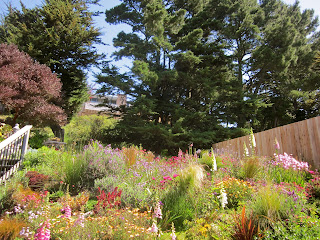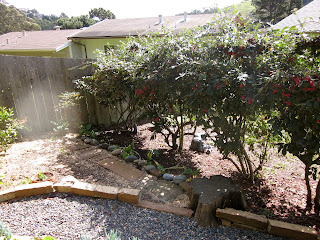
This steep hillside was dominated by cotoneaster, lorapetalum, salvias and agapanthus. Before installation photos are center right, installation photos are center left.

Now it has a mosaic of Mediterranean plants, phormium, chondrapetalum, armeria, digitalis, douglas iris, feather grass, lavender, arctotis, ceonothus, fever few, cinneria, euphorbia, salvia, sage, carex, daffodils, thyme, gravelia, lobelia, mimulus, rosemary and ribes speciosum (fuchsia flowering goosebery) are the major contributors.
























